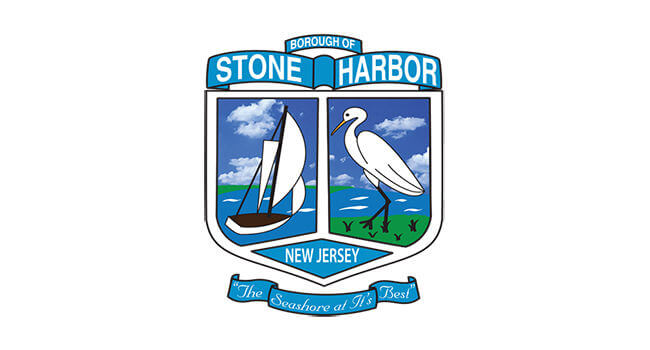STONE HARBOR – Stone Harbor’s federally sponsored beach replenishment is complete. History predicts that the newly nourished beaches will almost immediately begin to lose sand, which will move in a southerly direction past the 127th Street groin. Some of the sand will be captured by Stone Harbor Point and some will continue the journey south to the inlet and Five Mile Island.
Last year, Borough Council approved the hiring of a coastal consultant from Mott MacDonald and authorized that consultant, Douglas Gaffney, to proceed with a feasibility study. The goal of the study was to identify cost-effective actions the borough might take to reduce the amount and speed of sand erosion in the years between hydraulic beach replenishments. Part of that effort was to include a numerical computer model showing likely sand movement under various circumstances.
In an attempt to support that council-approved study, the Stone Harbor Property Owners Association (SHPOA) proposed a project to purchase GPS equipment and software licenses that would allow the borough, through the use of SHPOA volunteers, to conduct periodic measurements of sand elevation across borough beaches and Stone Harbor Point.
SHPOA would pay for the equipment and first-year licenses and would provide the volunteers who would be trained to operate the equipment and take the needed measurements.
At the June 20 council meeting, Gaffney explained that the new equipment run by volunteers would not be a replacement for the formal surveys done by professional engineers.
Having made the point about some of the limitations of nonprofessional survey data, Gaffney insisted the data would still be useful.
“It all fits into the narrative,” he said.
He argued, as did Geoff Woolery, chair of SHPOA’s sustainability committee, that taking measurements, perhaps as often as once a quarter in between professional surveys, can help provide useful insight into borough decisions about beach maintenance.
Both Gaffney and Woolery stressed the importance of moving quickly to obtain the equipment since data immediately following the beach fill would have special value.
Fast forward to July 18 and it was clear that any consensus surrounding the project had evaporated. Councilwoman Robin Casper reported that Administrator Manny Parada had put the purchase of the equipment on hold. Parada denied that was so.
There was a back and forth on Casper’s assertion and Parada’s denial until Casper read from a Parada email where Parada said he had asked Chief Financial Officer James Craft to “hold off” on the purchase until there was better knowledge of related expenses.
The council seemed at odds with the consensus it had when approving the purchase of the equipment just weeks before. Councilwoman Bunny Parzych pushed for the purchase of the equipment. Councilman Frank Dallahan saw little value in moving forward. He asserted that measurements from surveys done by non-engineers or surveyors would be “worthless” in any interactions with the state.
Parada, an engineer by training, confirmed Dallahan’s position, arguing that the data could not be used effectively and that attempts to do so would violate a “code of ethics” that engineers should uphold. Long-time borough engineer Marc DeBlasio saw some value in the data, saying it could be used as supplementary to formal survey results.
A few weeks earlier, Gaffney pointed out that the borough was not putting significant dollars at risk. The initial purchase, to be covered by SHPOA, was under $7,000 and the potential future annual license costs to the borough were under $3,000. Gaffney saw value in the data from periodic GPS surveys that exceeded the risk in funding.
While Mayor Judith Davies-Dunhour tried to find a pathway to a decision by the council, Dallahan carried his argument even further. He took the position that the borough should sever its relationship with Gaffney because the feasibility study was overdue and most of the $173,000 allocated to it had been expended.
Casper read Dallahan a letter assuring the borough that the report would be completed soon and that no additional funding would be needed. That did not impact Dallahan’s call for ending the relationship with Gaffney and Mott MacDonald.
SHPOA issued a comment on the meeting discussion, saying it “believes that proactive management of the beach is crucial to the enjoyment of Stone Harbor and supports the value of the investment of homeowners.”
On the feasibility study’s goals, SHPOA’s comment continued by stating, “We are supportive of the borough’s development of a beach management plan as a positive step toward sustaining one of the most valuable assets in Stone Harbor.”
SHPOA went on to characterize its offer of equipment and volunteer labor as its “contribution” to the effort at improving beach management. The organization reiterated its intent “to assist the borough in whatever beach management plan is agreed to and executed.”
Now what is needed is agreement on Stone Harbor’s governing body.
Davies-Dunhour reached a consensus on how the council would proceed. Gaffney was to be asked to attend the next meeting of council Aug. 1 to respond to any and all questions from the council regarding the proposed GPS equipment and volunteer measurement effort. The meeting following that, Aug. 15, council will vote on whether to proceed with the project.
Contact the author, Vince Conti, email vconti@cmcherald.com.








